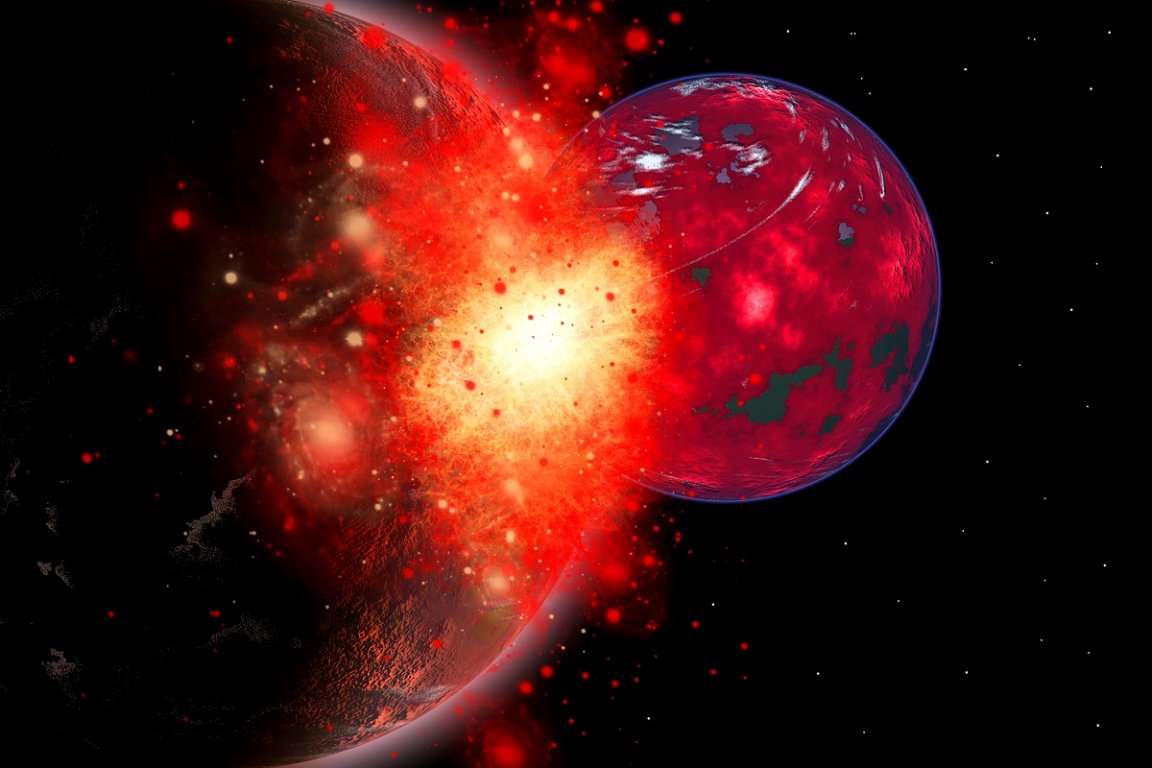
Crash Course
Two massive, icy worlds collided in a distant star system, obliterating each other and forming a red hot, donut-shaped cloud.
And, to the delight of astronomers, they caught a glimpse of the catastrophe — marking the first time that the immediate aftermath of a planetary collision has ever been observed.
Their findings, newly published in the journal Nature, could shed much-needed light not only on brutal interplanetary collisions, but even perhaps how they can lead to the formation of new planets.
“It would be very spectacular,” co-lead author Matthew Kenworthy, an astronomer at Leiden University in the Netherlands, told The Guardian. “The energy of the collision would turn the remnant into something resembling a star, fainter than the main star in the system but about seven times larger in size, visible all through the rest of the stellar system.”
Bright and Dark
Astronomers first caught wind of the event in 2021, when they noticed that the visible light of a star, designated ASASSN-21qj, was dramatically dimming over and over.
It turned out this wasn’t the star’s first fluctuation, either, as scouring previous observations revealed that in the three years preceding the dimming, ASASSN-21qj had actually doubled in brightness in the infrared spectrum.
That raised a puzzling question. How can a star appear to brighten in one spectrum while fading in another?
“We went through a whole series of possible ideas,” Kenworthy told New Scientist. “The one that seems to fit all the data we have is a collision of two ice giants.”
According to Kenworthy’s theory, these ice giants would have been around the size of Neptune, which is over 17 times the mass of Earth.
Upon colliding, the two worlds essentially vaporized each other, billowing out a donut-shaped cloud of extremely hot debris. The heat of that cloud, estimated to be around 1,300 degrees Fahrenheit, would explain the infrared brightening.
Then, as the freshly formed donut continued to orbit around ASASSN-21qj, it would eventually pass between the star and Earth, smothering its light to astronomers.
Old Timer
It’s an exciting explanation, but not a complete one. Astronomers still don’t know what caused the planets to cross paths.
And though a planetary collision seems the most likely possibility based on the evidence, it’s still, overall, rare. At an estimated 300 million years old, the star system should be too mature for planetary collisions to still happen.
Either way, the coming years will be immensely interesting. More observations should help bear out the collision’s occurrence — but even more tantalizingly, astronomers believe that this cloud could eventually give birth to new planets and moons.
“My prediction is in five to 10 years we’ll start seeing extra light from the system bouncing from the dust cloud,” Kenworthy told New Scientist. “If it doesn’t do that, something else is going on.”
More on space: Scientists Find Evidence for Large Unknown Objects in Distant Solar System